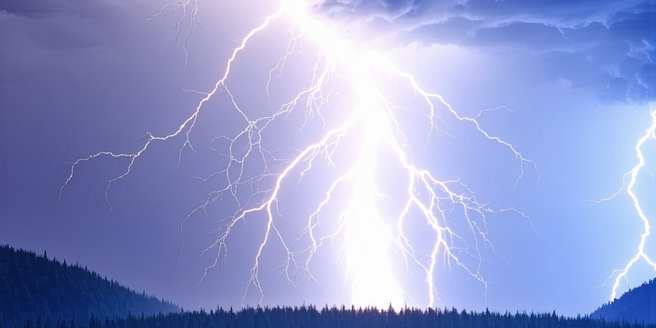
Understanding the Basics of Electric Charge
Electric charge is a fundamental property of matter, manifesting in two types: positive and negative. Opposite charges attract, while like charges repel, a principle defining many phenomena around us. At a microscopic level, electric charge is carried by subatomic particles, with electrons bearing a negative charge and protons a positive one. This foundational concept helps in understanding how electric fields are formed and how they interact with the surrounding environment. The balance or imbalance of electric charges in objects and materials creates electric fields. This fundamental principle not only underlies the operation of electrical devices we use daily, but also plays a crucial role in natural occurrences such as lightning. Lightning is essentially a massive electrostatic discharge caused by the build-up of charged regions in clouds, a process dependent on the basic properties of electric charge.
The Role of Atmospheric Conditions in Lightning Formation
Lightning formation is deeply influenced by atmospheric conditions. Temperature, humidity, and wind patterns all contribute to thunderstorm development, which is the breeding ground for lightning. Warm, moist air rises and cools, leading to the formation of clouds and precipitation. During this process, ice particles within the cloud collide, creating areas of differing electrical charges. The distinct separation of electric charges within a cloud or between the cloud and the ground creates a strong electric field. Once this field becomes strong enough, it overcomes the insulating properties of air, leading to a discharge known as lightning. These conditions are monitored by meteorologists to predict storm formation, providing insights into potential lightning activity. Understanding how atmospheric conditions contribute to lightning is essential for both safety measures and advancing weather prediction technologies.
The Process of Lightning Initiation and Propagation
Lightning initiation begins when the electric field within a storm becomes sufficiently strong to overcome the air’s natural resistance, resulting in a rapid discharge. This process starts with the formation of a stepped leader, a conductive path that moves toward the ground in a series of rapid steps. As the leader approaches, positively charged particles on the ground are attracted upwards, creating an upward streamer. When these two meet, a conductive path is established, allowing a powerful current to flow between the cloud and the ground. This visible discharge is what we recognize as a lightning strike. The return stroke travels back up to the cloud at an incredible speed, producing the bright flash associated with lightning. Understanding this process enhances our ability to predict and mitigate the effects of lightning strikes on people and structures.
Types of Lightning Discharges and Their Characteristics
Lightning discharges can vary, manifesting in different forms based on their origin and path. Ground-to-cloud lightning, although less common, occurs when the discharge initiates from ground structures. Cloud-to-ground lightning, the type most observed, starts within a cloud and strikes the ground. Intra-cloud lightning occurs within a single cloud and is the most frequent type, while cloud-to-cloud lightning occurs between different clouds. Each type of lightning discharge has unique characteristics and implications for electrical and safety concerns. For instance, cloud-to-ground lightning poses significant risks to life and infrastructure due to its direct contact with the earth. Recognizing these distinctions is crucial for developing comprehensive safety measures and for advancing our understanding of atmospheric electricity.
Safety Measures and Technological Advances in Lightning Protection
Safety measures against lightning involve both individual precautions and technological advances. Personal safety can be enhanced by seeking shelter indoors during storms, avoiding open fields, and refraining from contacting conductors like water or metal. On a larger scale, technology plays a vital role in lightning protection. Lightning rods, first conceived by Benjamin Franklin, remain fundamental tools. These rods safely conduct lightning discharges to the ground, preventing structural damage. Modern advancements include materials designed to better bear lightning strikes and more sophisticated grounding techniques for buildings. Innovations in weather prediction and early warning systems also contribute significantly to reducing lightning-related hazards. By understanding both the fundamental science of lightning and the practical safety measures, we continue to reduce the risks associated with lightning in our ever-urbanizing world.
